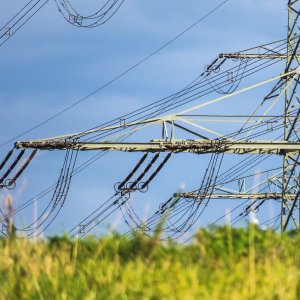Proven Solutions for a Healthy Grid

It is an undisputed fact that the National Electricity System will be expanded in the coming years, as new generators will be introduced, and their energy will have to be connected to the grid. This situation creates valuable business opportunities for a well-known name in the industry: GE. The multinational has developed close ties with generators over several years, so it is in a strategic position to offer them an integrated electrical plant. Pedro Martín, Commercial Director North Latin America of GE, explains that when strong solar or wind resources suddenly generate large amounts of power, the unexpected increase in electricity injects disturbances into the network, such as frequency variations and harmonics, which can blow up a substation if they are strong enough. “Every renewable energy generator needs to mitigate these phenomena, and GE Energy Management has tools to achieve this, such as capacitor banks and synchronous condensers,” Martín says.
GE is also examining opportunities in the grid itself. “The Mexican electric system is well-developed, since CFE has been incredibly thorough in creating and maintaining the grid. I must say GE Energy Management is well-positioned to work in this area too, as we are leaders in substation automation with a commanding market penetration,” explains Martín. He points out that the Energy Reform allows for private entities to enter the transmission area through the Independent Transmission Entity modality, which consists of a private company building and operating parts of the grid. GE Digital Energy (GE DE), a division of GE that provides solutions for energy management optimization, will take advantage of its leading position in technological development and its proximity to CFE to position itself with new players in the transmission segment. “A private company entering the Mexican market or a domestic company that decides to enter the transmission segment will have an advantage when working with GE because we have been collaborating with CFE since the utility’s creation,” Martín advises.
GE has solutions for grid diagnostics and demand forecasting that can help in planning the expansion of the grid. Its energy management system (EMS) handles the usual variables in a network, using information obtained from elements in the field, such as syncrophasors. Other pieces of equipment are used to monitor transmission lines, cables, and even temperature. “If the temperature rises, the transmission capacity in a copper cable is reduced. Therefore, we need to know the temperature of every transmission cable so that the system can manage all of these variables and determine the transmission capacity in real time,” Martín comments. Once GE has all this information, it examines the generators to determine the best alternative for evacuating the electricity. Martín stresses that plenty of these complex variables and decisions need to happen in real time, which is what its EMS enables users to do.
The distribution segment also provides opportunities for GE, but Martín acknowledges that this segment faces more challenges. “Now CFE has a different business model focused on profit, so it will have to maximize its efficiency. It cannot afford losses, either technical or otherwise.” The main concern surrounding non-technical losses is electricity theft, and Martín says an optimal solution is to install a meter that cannot be tampered with, such as GE’s automated metering infrastructure that allows for remote operations, including remote readings and management of the infrastructure. “These technologies have proven successful in other countries, so they can help in Mexico too,” he asserts.
On the technical losses side, Martín claims the key is to manage the distribution grid in the most efficient manner. “We need to monitor certain factors, such as the capacity at which the lines are operating. We can also audit transformers in real time and predict any failure from insulation degradation or electrical abnormalities in aged infrastructure.” GE Energy Management also uses systems to manage the workforce, making efficient use of human resources when a technical issue rises. The systems can determine at which point in the distribution network an outage was generated and what caused it. If the problem cannot be solved remotely because a transformer blew up, for example, the system will identify where this happened and send out a crew to fix it according to the location and the type of issue. “It will be done quickly and efficiently, enabling operations to be resumed as soon as possible. Efficiency does not only mean maximizing the use of your current infrastructure, it also means saving money,” Martín explains.
Smart technologies will be vital in Mexico beyond the reduction of losses in the grid. Martín believes that there will be several ways to determine prices in the wholesale electricity market, one of them being the spot market. “Spot prices require real-time information, and a smart system reads several variables in real time and provides intelligent information so that a person can make a correct decision.”



















